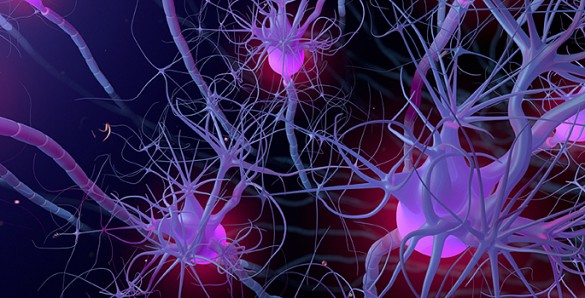
In an effort to understand how neurons develop different “architectures,” Vanderbilt developmental biologists have discovered a genetic switch that controls one type of neuron branching in the nematode worm.
The findings, published in the July 24 issue of Neuron, implicate a gene conserved through evolution, suggesting it may have a similar function in mammals.
“Understanding the basic genetic and cell biological components that define neuron architecture is the first step in developing therapeutic approaches for neuronal structures that have been altered by injury or disease,” said David Miller, Ph.D., professor of Cell and Developmental Biology.
In the worm Caenorhabditis elegans, as in human skin, sensory neurons that respond to different stimuli – gentle touch, harsh touch, pain, heat, cold – have different architectures.
“You need this diverse array of sensory neurons to respond to your environment,” Miller said. “During development, we expect that genetic circuits produce exactly the right number and distribution of sensory neurons to allow for a complete response to different stimuli.”
The molecular participants in these circuits, however, have not been completely defined.

Miller and his colleagues made the unexpected discovery that deletion of a certain gene (called ahr-1) in C. elegans changed a ‘gentle touch’-sensing neuron into a ‘harsh touch/pain’-sensing neuron. The two types of neurons have markedly different structures. The gentle touch neuron is simple, with a single non-branched process growing out of the cell body. The harsh touch neuron is large, with many branches.
“This harsh touch neuron is the largest and most elaborately branched neuron in the worm, and ahr-1 is the switch — if it’s on, we get the simple neuron, if it’s off, we get the harsh touch neuron. The transformation’s really dramatic,” Miller said.

Cody Smith, Ph.D., who was a graduate student in the lab, and Timothy O’Brien, who was a research assistant and is now a graduate student at Vanderbilt, used genetics, fluorescence imaging and microarray studies of gene expression in single worm cells to explore the mechanism of ahr-1 action.
They showed that the ahr-1 gene encodes a transcription factor that regulates gene expression, and they identified downstream proteins involved in neuron branching.
They describe one branching component, a member of the family of membrane proteins called claudins. Claudins were known to contribute to physical junctions between cells, but this study is the first to show that this membrane protein can also control dendritic architecture (the “message receiving” part of a neuron) – possibly by stabilizing branches with linkages to the skin, Miller said.
The fact that the ahr-1 gene is conserved in humans suggests that a similar pathway could control human neuron morphogenesis.
“Almost everything we know about neuronal morphology comes from studies of axons (the “message sending” part of a neuron), and much less is known about how dendritic architecture is controlled,” Miller said.
It’s possible that genetic diseases or injury could alter the dendritic structures of sensory neurons – potentially making a person hypersensitive to pain. In the brain, dendritic structures disappear in neurodegenerative diseases.
“If we know more about the pathways that generate dendritic architectures, we may be able to develop rational approaches for manipulating these structures – to change them or restore them. That is the hope,” Miller said.
The research was supported by grants from the National Institutes of Health (NS026115, NS066882, NS079611, HG004263, NS071801).

















